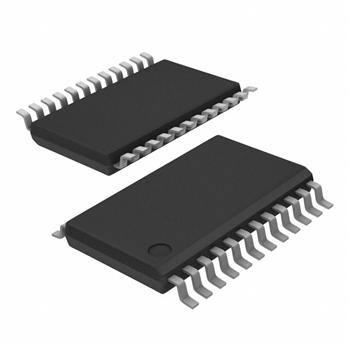BQ29312PWR 供应商
-
BQ29312PWR
品牌:TI 封装/批号:原厂原装/22+ -
BQ29312PWR
品牌:TI 封装/批号:/8 -
BQ29312PWR
品牌:TI(德州仪器) 封装/批号:TSSOP-24/2022+ -
BQ29312PWR
品牌:TI 封装/批号:标准封装/23+
BQ29312PWR 属性参数
- 标准包装:2,000
- 类别:集成电路 (IC)
- 家庭:PMIC - 电池管理
- 系列:-
- 功能:过压/欠压保护
- 电池化学:锂离子(Li-Ion)、锂聚合物(Li-Pol)
- 电源电压:4.5 V ~ 25 V
- 工作温度:-25°C ~ 85°C
- 安装类型:表面贴装
- 封装/外壳:24-TSSOP(0.173",4.40mm 宽)
- 供应商设备封装:24-TSSOP
- 包装:带卷 (TR)
- 配用:296-20821-ND - EVALUATION MODULE FOR BQ20Z80
产品特性
- 2-, 3-, or 4-Cell Series Protection Control
- Can Directly Interface With the bq2084 Gas Gauges
- Provides Individual Cell Voltages and Battery Voltage to Battery Management Host
- Integrated Cell Balancing Drive
- I2C Compatible User Interface Allows Access to Battery Information
- Programmable Threshold and Delay for Over Load and Short Circuit During Charge and Discharge
- System Alert Interrupt Output
- Host Control Can Initiate Sleep Power Mode and Ship Mode
- Integrated 3.3-V, 25-mA LDO
- Supply Voltage Range From 4.5 V to 25 V
- Low Supply Current of 60-µA Typical
- APPLICATIONS Notebook PCs Medical and Test Equipment Portable Instrumentation
- Notebook PCs
- Medical and Test Equipment
- Portable Instrumentation
产品概述
The bq29312 is a 2-, 3-, or 4-cell lithium-ion battery pack protection analog front end (AFE) IC that incorporates a 3.3-V, 25-mA low-dropout regulator (LDO). The bq29312 also integrates an I2C compatible interface to extract battery parameters such as cell voltages and control output status. Other parameters such as current protection thresholds and delays can be programmed into the bq29312 to increase the flexibility of the battery management system.The bq29312 provides safety protection for overcharge, overload, short-circuit, overvoltage, and undervoltage conditions in conjunction with the battery management host. In overload and short-circuit conditions, the bq29312 turns the FET drive off autonomously dependant on the internal configuration setting.The communications interface allows the host to observe and control the current status of the bq29312. It enables cell balancing, enters different power modes, sets overload levels, sets the overload blanking delay time, sets short-circuit threshold levels for charge and discharge, and sets the short-circuit blanking delay time.Cell balancing of each cell is performed via a cell bypass path, which is enabled via the internal control register accessible via the I2C compatible interface. The maximum bypass current is set via an external series resistor and internal FET on resistance (typical 400 ).
